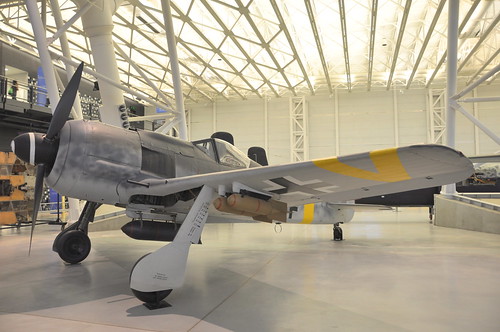I don't have any photographs unfortunately, (I could have sworn I did) but I have a telegraph included in Luftwaffe Camouflage & Markings Volume Two that states that the V is supposed to be "open toward the direction of flight flight with angle of 45 degrees and arms 25 centimeters broad (...)
The arms of the victor to be carried over the leading edge of wing to upper side for distance of 60 centimeters to permit recognition from above also."
I've never seen any reference to the second part, however empirical evidence is provided with:
"The speed with which the ground staff had been required to apply these markings did not allow for absolute accuracy. When the Fw 190F-8R-1, WNr 931884 was being restored by the National Space and Air Museum staff in Washington, the original tactical markings were carefully measured. (...) The Victor marking was found to be 28cm wide, not 25cm, and extended over the wing leading edge for 56cm on the outboard section and 38 cm inboard, not 60cm overall as specified. Not significant differences, and understandable under field conditions."
It's therefore safe to say that following these instructions would provide the best possible representation of the marking that probably appeared on this aircraft.
you can then pictures from the Air & Space Museum's restoration, potentially the best reference considering that they were precise enough to take measurements (and note measurements only a few centimeters off from the orders)

